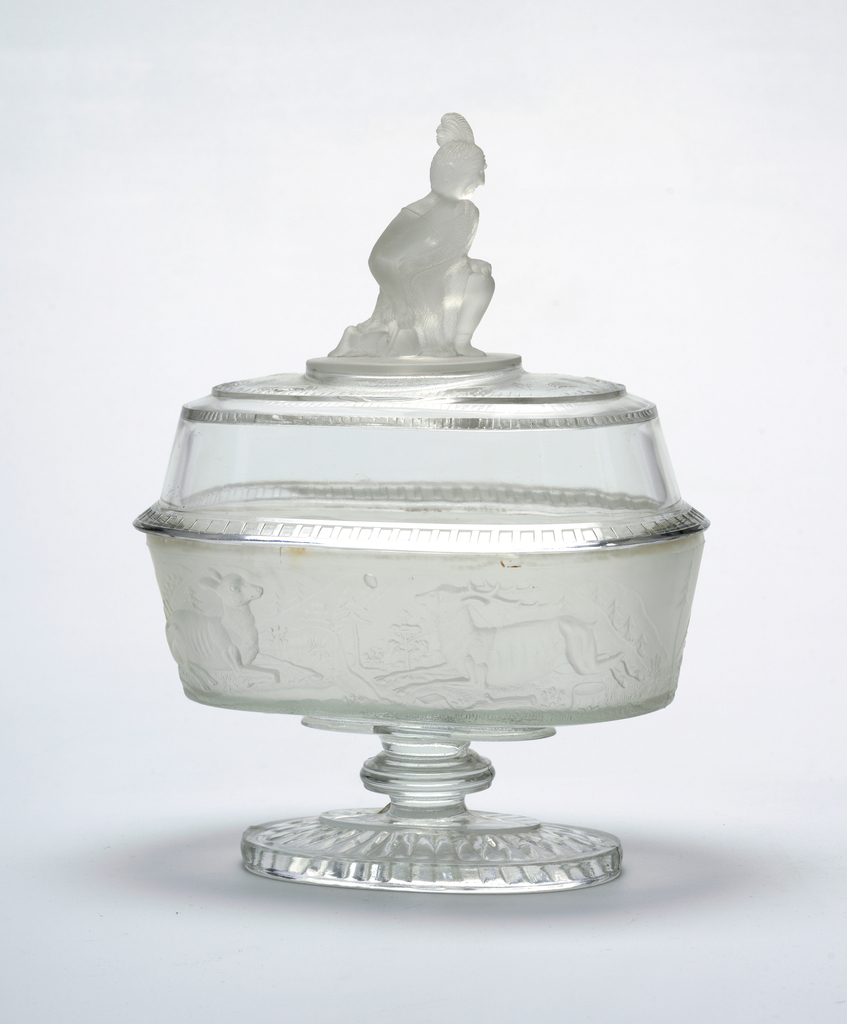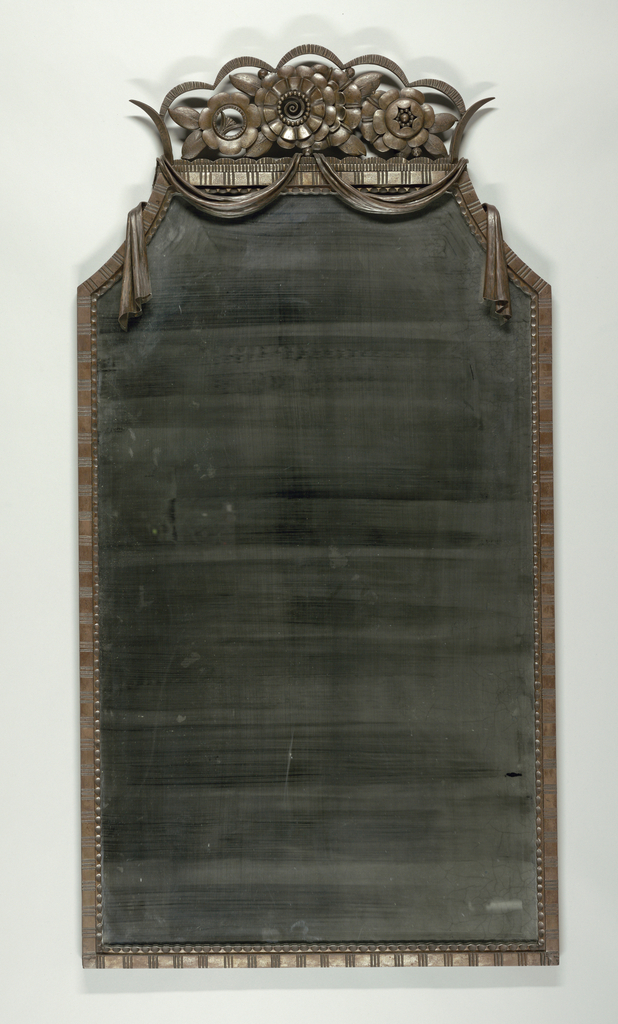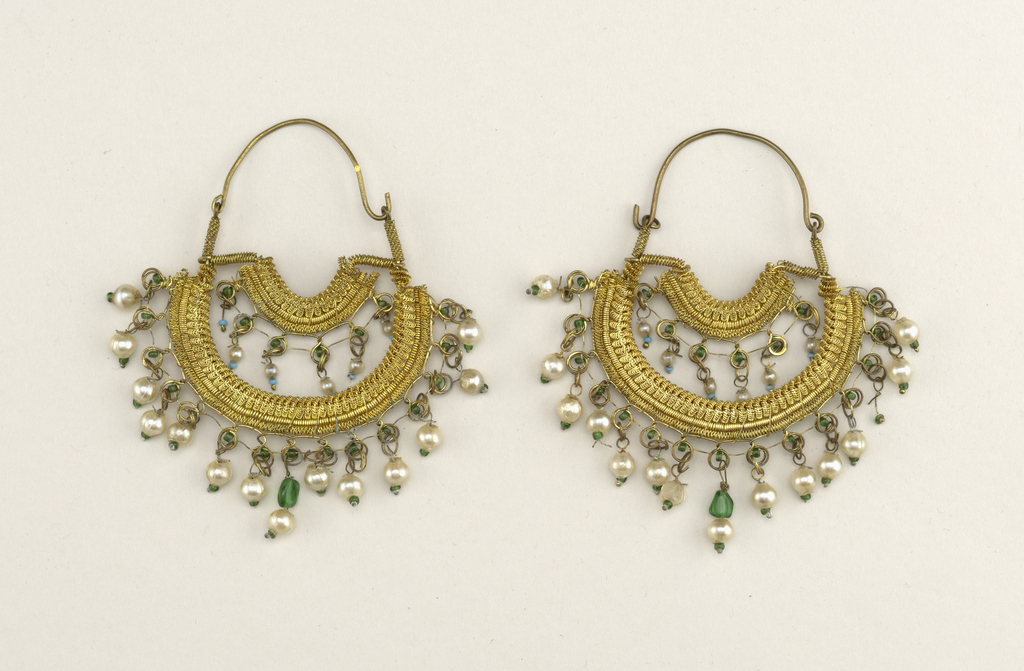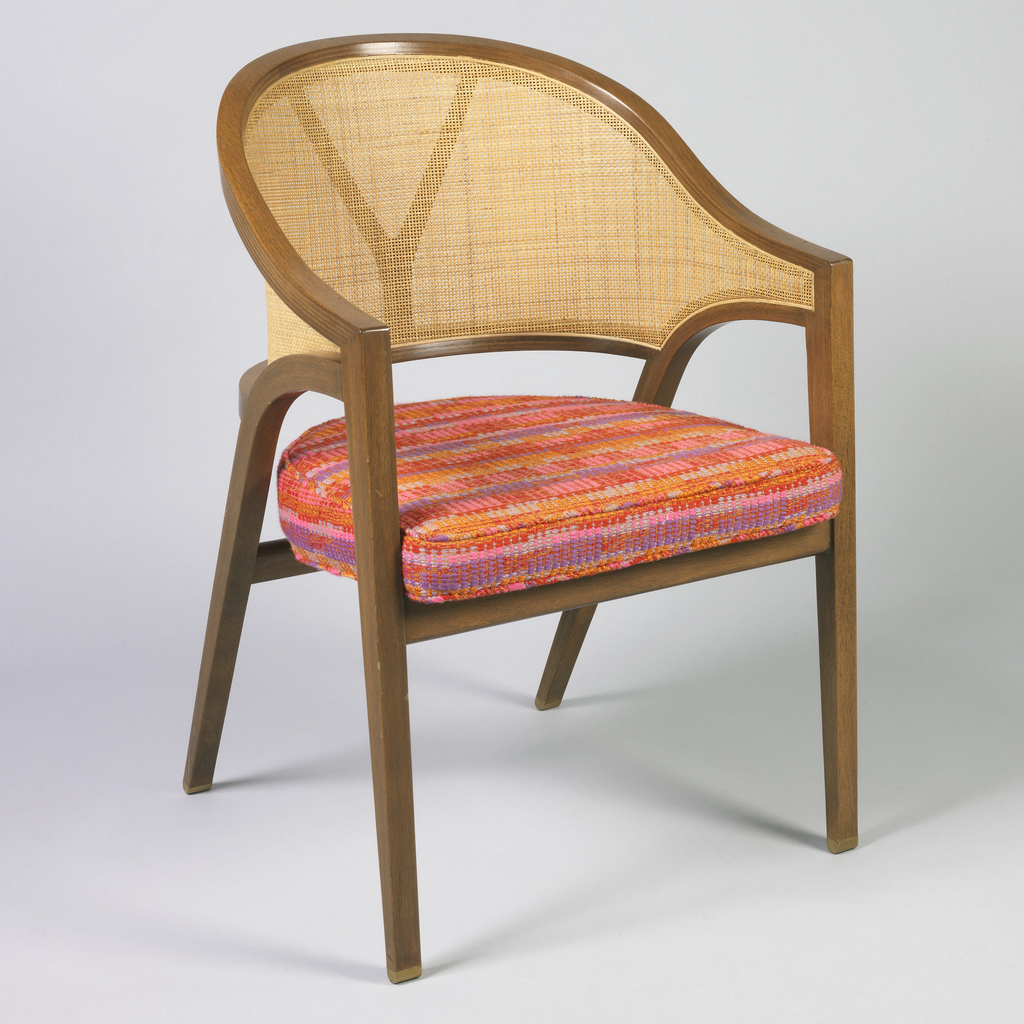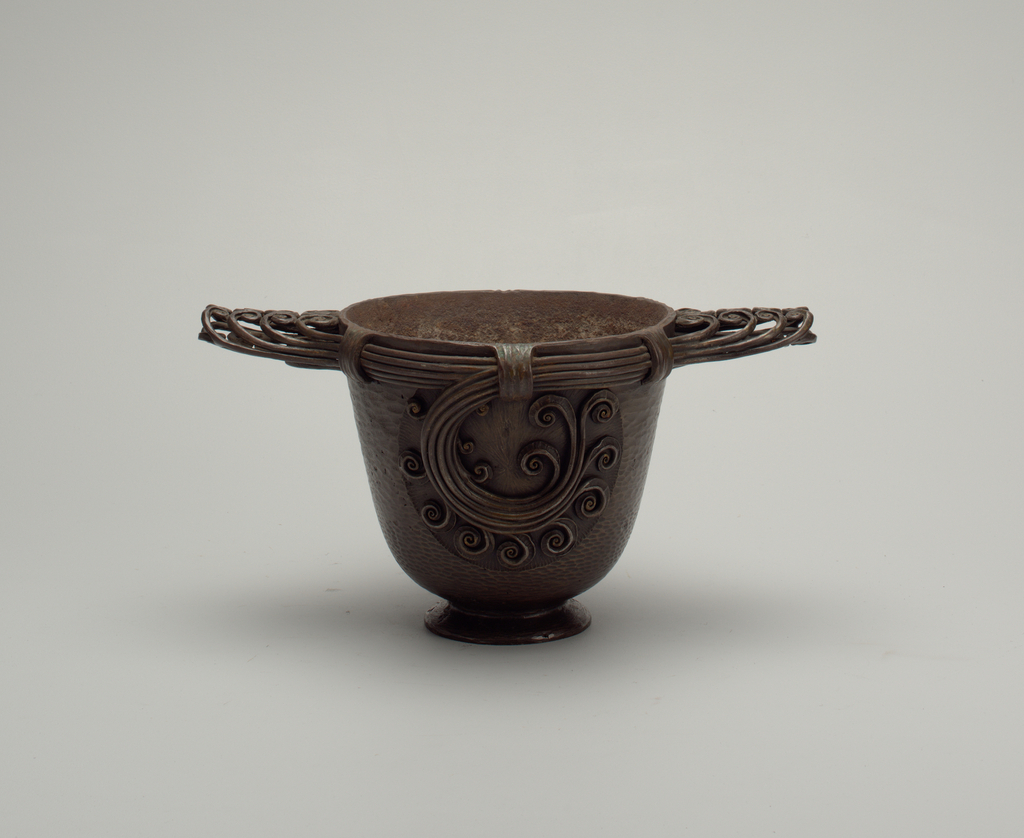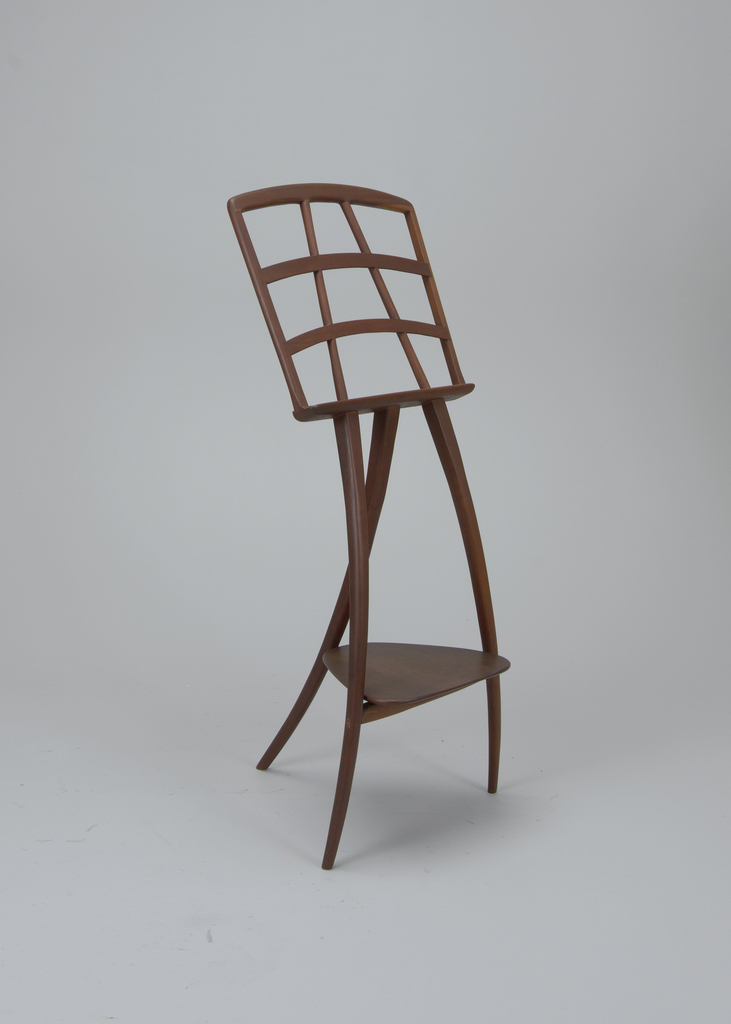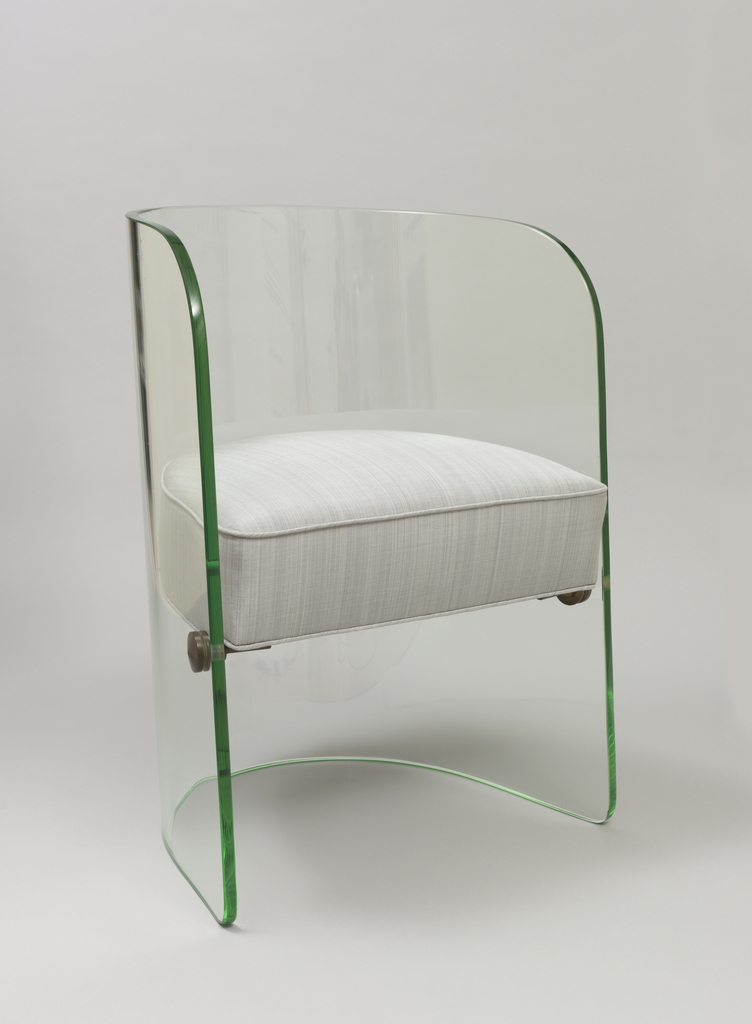In the mid-1820s, the development of press-molding radically changed the American glass industry, increasing output and bringing affordable decorative glasswares within the reach of a broader consumer market. In this new production process, workers placed gathers of molten glass in a machine press and applied pressure, forcing the glass into the contours of a mold....
The French designer Edgar Brandt spurred a revival of interest in interior furnishings made of iron in the 1920s. His participation in the 1925 Paris Exposition won him great praise. Brandt’s ironwork was admired throughout the fair; he designed the gates of the front entrance, his work featured in Ruhlmann’s pavilion, and he staged an...
The English word filigree derives from the Latin filum, a thread, and grano, a grain or bead, through the Italian term filigrana. Filigree exists as a design technique even further back in antiquity than ancient Rome. While now a specialization, earlier jewelers, especially in Egypt, the Middle East, Italy, France and Spain, considered it part of...
Edward Wormley was the primary designer for the Indiana-based furniture manufacturer Dunbar from 1931 to 1967, responsible for securing Dunbar’s reputation as a leader in modern American furniture production. In January of 1932 Dunbar released Wormley’s first pieces which were authentic adaptations of historical forms including a Chippendale sofa in the collection of the Metropolitan...
The French designer and architect Marc Held has worked across various media, forms, and dimensions, from teapots to automobiles, and wristwatches to cruise ship interiors. His intrigue with the possibilities of kinetics in furniture design drove him to develop the “Culbuto” furniture series in 1967. Made up of a low-back armchair, a high-back armchair and...
Gertrud and Otto Natzler were leading figures of West Coast ceramic production in the mid-twentieth century. This bowl, as well as two other Natzler pieces, were donated by the granddaughter of the original owner, Friederich Rotter, who met the Natzlers in the 1930s through his Vienna-based home furnishings business and gallery, Der Wohnraum that sold...
Edgar Brandt showed promise in metalwork since his teenage years. He forged a rose in iron for his graduation masterwork from the École Nationale Professionnelle de Vierzon, located in a traditional site of metallurgy manufacture in central France. Following further training and certification through the Brevet Technicien Superieur Brandt served two years in the 153rd...
I recently enjoyed a visit to American craftsman Wharton Esherick’s former studio and home, now operating as a museum, on the top of Valley Forge Mountain in Malvern, Pennsylvania. Exteriors and interiors on the site are amusingly playful yet impressively clever and upon closer examination, carefully calculated. There is barely a straight line in the whole design. Instead...
More than 44 million people attended the New York World’s Fair in 1939 and two of the many exhibits that visitors would have enjoyed were the Glass Center, a pavilion that marketed glass as the material of the future, and the Town of Tomorrow, a faux suburb of model homes that included the House of...
